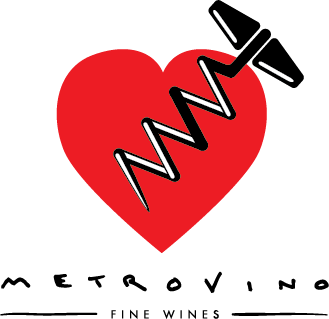Quelques jours dans Le Jardin (de la France) which is the Loire Valley.
By Richard Harvey
This moniker is well deserved, as the région is just pretty, pretty, pretty as a Hollywood Marie Antoinette (when it's not being amazing). But 2016, from a wine perspective, has not smiled upon this lovely garden.
The end of June 2016 closed a chapter on the first 6 months of what the French winegrowers all seem to call "une année dificile".
This is a nuanced understatement of a year where there might be a flood of lapsed Catholics crowding the église to both ask the Holy Spirit what the hell they did to deserve this and what do they need to do to even see a harvest in 2016. The "2 G's" of "grêle" (hail) and "gelé" (frost) will be a familiar litany from any journalist who writes the story of this vintage, particulary the vineyards of Burgundy, Loire, Champagne and Alsace.
The morose state of the Burgundians that I visited at the beginning of the month was engendered by a succession of frost, hail, and now diseases like mildew and other fungal enemies that assault the brutalized survivors of the the first two Riders of the Apocalypse.
Now, having been in the Loire, there's no joy in this truly sylvan, almost bucolic region, so resplendent in greenery and a proverbial bouquet of flowers to enrobe the fabulous chateaux and the dignified and ancient stone houses that abound here.
So far, no apocalyptic hail has fallen (this entire letter is written with crossed fingers for the vignerons) in the Loire, but this northerly region has felt the icy knife of a devastating frost. Worst case scenarios are the obvious 100% loss of a harvest, but many other places with even a less than 50% crop loss represent a crushing blow to winegrowers in the Loire.
The last 5 or so years have been marked by crops which struggle to even compare to a "normal" volume of production. The Loire had such lovely, high-quality harvests in 2014 and 2015, but nature was still an avaricious dominatrix, giving only modest yields in volume. This has lead to a scenario where many growers are watching any remaining stocks of previous vintages vanish like a Will o' the Wisp.
What does a hard frost do to a grapevine? All the tender parts, newly sprung in spring; leaf, cane, buds, all are in their most fragile state. Even more critical of a phase is the beautiful, ephemeral flowering of the vine, with the minuscule, delicate flowers only presaging the grapes they will bear by virtue of their presence on an embryonic stem-cluster. This delicate floraison can be literally shattered by cold, heat, wind…you name it, anything short of benign conditions.
If the flowering does not go well, you are guaranteed a small crop. What remains might turn out to be of superlative quality, but "there's the rub"… the winegrower at harvest time can only sigh at the loss of volume in the Spring.
The situation in many locales was made even worse by high humidity just before the frost, the the advent of bright sunshine right afterwards. This creates a malicious mini-magnifying glass on the leaves of the vine, "burning" the leaves like a laser.
The aforementioned humidity was present in quantity! Record rainfalls in late Spring in many parts of France filled rivers and soaked vineyards.
This affected many of Metrovinos' producers, as most of them work their vineyards mechanically, rather than chemically. Even on some hillside vineyards, and even for the few vignerons who work with horse and plow; a tractor stuck 20 meters into the vineyard is not a good thing. It was impossible to plow the grasses and weeds between the rows, or to get in and use any treatment to prevent the diseases that attack when humidity (and sometimes warmth) are present. Many of our growers were obliged to don backpack-like sprayers (often weighing 60+ KG when full of liquid) and WALK their vineyards in order to spray for disease. And yes, these are organic-compliant sprays, but 60 litres of liquid still weighs the same, organic or not.
Outside of the harvest period, where the roads are clogged with tractors and workers, I have never seen such frantic activity in the vines in June. My visits to some of my favourite vignerons would have literally necessitated riding a tractor, as they scramble to combat nasty molds. At least this is action and response, instead of the reminders of the seemingly futile efforts of combatting hail and frost.
What now? The cliche of "it ain't over till the fat chanteuse chante" (like my Franglais?) is always true, whether the growing season starts well or disastrously. In both cases, the winegrowers would not dare to pronounce on anything definitive regarding the potential QUALITY of the wine the grapes will offer up. They CAN tell you the sad tale of lost volumes and lost income ahead.
"Nobody is allowed to be ignorant of the Loire"
If you find a journalist/ blogger/sommelier (or your friend Bud who took a Sommelier course) declaring anything definitive before such a time, cancel your subscription and/or sever your relationship. They are a putz.
The winegrowers of the Loire might be attempting a smile through clenched teeth and with tears in their eyes when they say that the vintage yielded a lovely wine, after all.
This is the optimism that I learn (not being naturally one myself) from all agriculturalists, in this case the ones responsible for making that magical food, wine.





